Obtain the equivalent capacitance of the network in Fig. 2.33. For a 300 V supply, determine the charge and voltage across each capacitor.
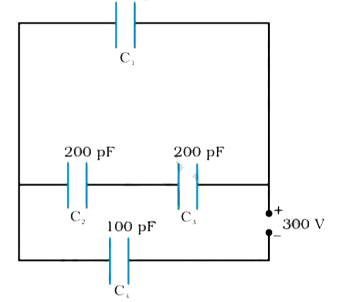 Solution in Gujrati
Solution in Gujrati
Drawing equivalent network as follow,
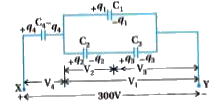
Given circuit in example look like as shown in above figure.
Here = 100 pF and
Equivalent capacitance of series connection of and
pF
Now and are in parallel. Its equivalent capacitance C
p F
Now and C are in series its equivalent capacitance C
pF
Total charge is Q then C =
C
Since and C are in series the charge Q on both capacitor are same .
Charge on and charge on C = C .
But C is for parallel connection of and and both capacitors are same hence both capacitor having same charge .
Charge on
and charge of C
But is the equivalent capacitance of series connection of and . Hence and having same charge and it is equivalent to the charge of
Charge on
and charge on
Voltages across each capacitor :
V
Topper's Solved these Questions
- ELECTROSTATIC POTENTIAL AND CAPACITANCEBOOK - KUMAR PRAKASHANCHAPTER - ELECTROSTATIC POTENTIAL AND CAPACITANCEEXERCISE - Section B ( Numerical From DARPAN. Based on Textbook )
19 Videos
- ELECTROSTATIC POTENTIAL AND CAPACITANCEBOOK - KUMAR PRAKASHANCHAPTER - ELECTROSTATIC POTENTIAL AND CAPACITANCEEXERCISE - Section B (questions)
2 Videos
- ELECTROSTATIC POTENTIAL AND CAPACITANCEBOOK - KUMAR PRAKASHANCHAPTER - ELECTROSTATIC POTENTIAL AND CAPACITANCEEXERCISE - Section B Numericals
16 Videos
- ELECTROMAGNETIC WAVESBOOK - KUMAR PRAKASHANCHAPTER - ELECTROMAGNETIC WAVESEXERCISE - BOARD.S QUESTION PAPER MARCH - 2020 (PART - B) SECTION - C
5 Videos
- MAGNETISM AND MATTERBOOK - KUMAR PRAKASHANCHAPTER - MAGNETISM AND MATTEREXERCISE - SECTION D Multiple Choice Questions (MCQs) (MCQs asked in Competitive Exams) MCQs asked in Board Exam and GUJCET
7 Videos
Similar Questions
An electric field is represented by →E=Axˆi where A = 10Vm2 . Find the potential of the origin with respect to the point (10,20) m.
View SolutionA slab of material of dielectric constant K has the same area as the plates of a parallel plate capacitor but has a thickless (12)d. Where d is the separation of the plates . How is the capacitance changed when the slab is inserted between the plates
View SolutionCalculate the potential at a point P due to a charge of 4×10−7 C located 9 cm away.
View SolutionDetermine the current in each branch of the given network.
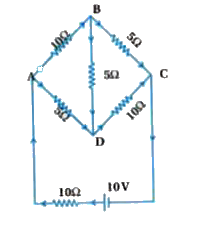
View SolutionAt a place on earth the vertical component of earth's magnetic field is √3 times its horizontal component. The angle of dip at this place is …...
View SolutionA network of four 10μF capacitors is connected to a 500V supply as shown in Fig. Determine the (a) equivalent capacitance of the network and (b) charge on each capacitor.
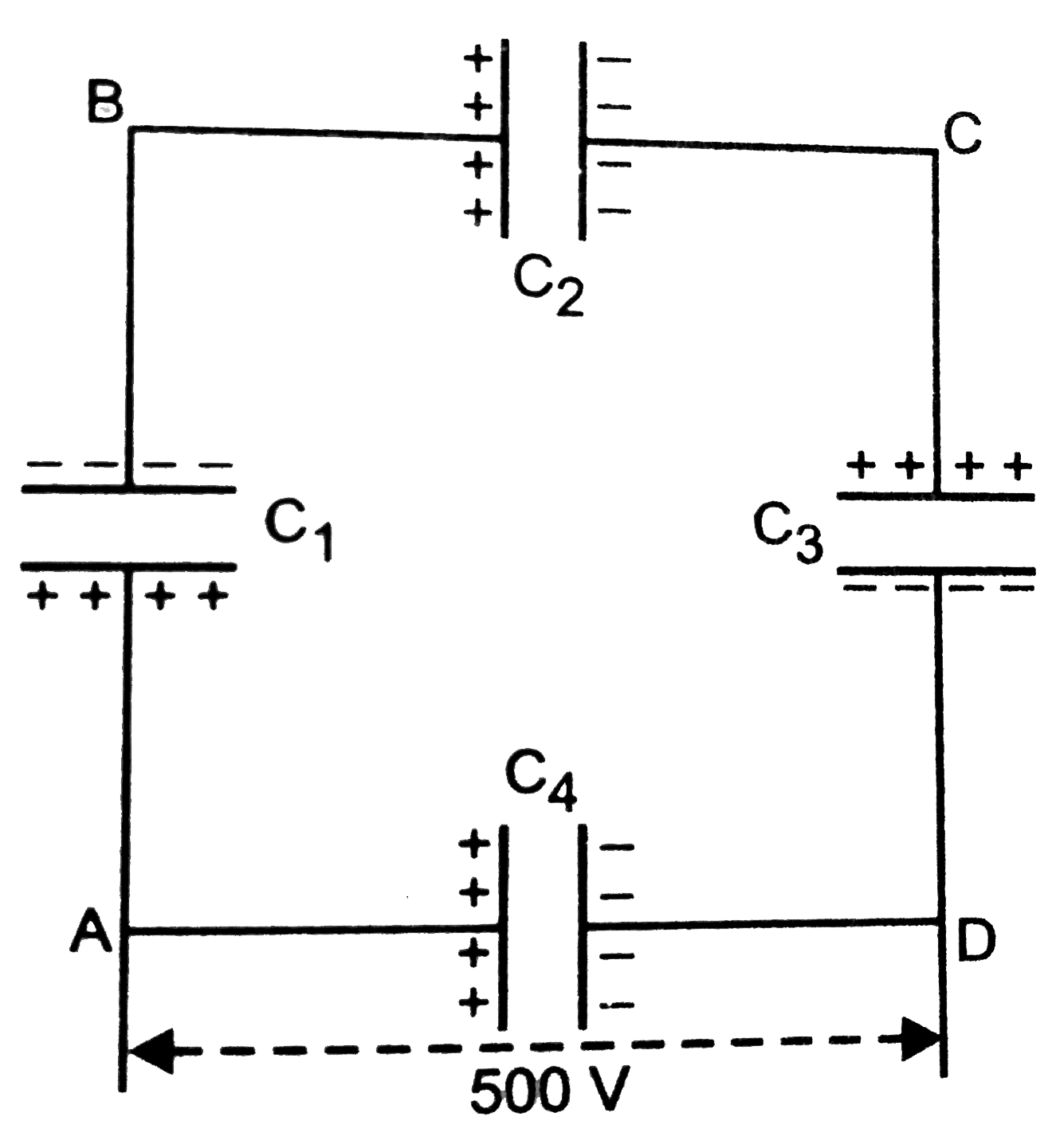
View SolutionObtain equivalent capacitance of the following net work, Fig. For a 300V supply determine the charge and voltage across each capacitor.
View Solutionचित्र 2.33 के नेटवर्क (जाल) कि तुल्य धारिता प्राप्त कीजिए । 300 V संभरण (सप्लाई ) के साथ प्रत्येक संधारित्र का आवेश व उसकी वोल्टा प्राप्त कीजिए ।
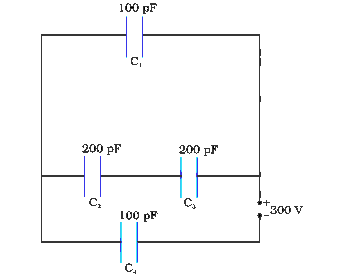
View SolutionA network of four capacitors each of 15μF four capacitors each of the μF capacitance is connected to a 500 V supply as shown in the figure . Determine (a) equivalent capacitance of the network and (b) charge on each capacitor .
View Solutionचित्र के नेटवर्क (जाल) की तुल्य धारिता प्राप्त कीजिए |300 V संभरण (सप्लाई ) के साथ प्रत्येक संधारित्र का आवेश व् उसकी वोल्टा ज्ञात कीजिए |
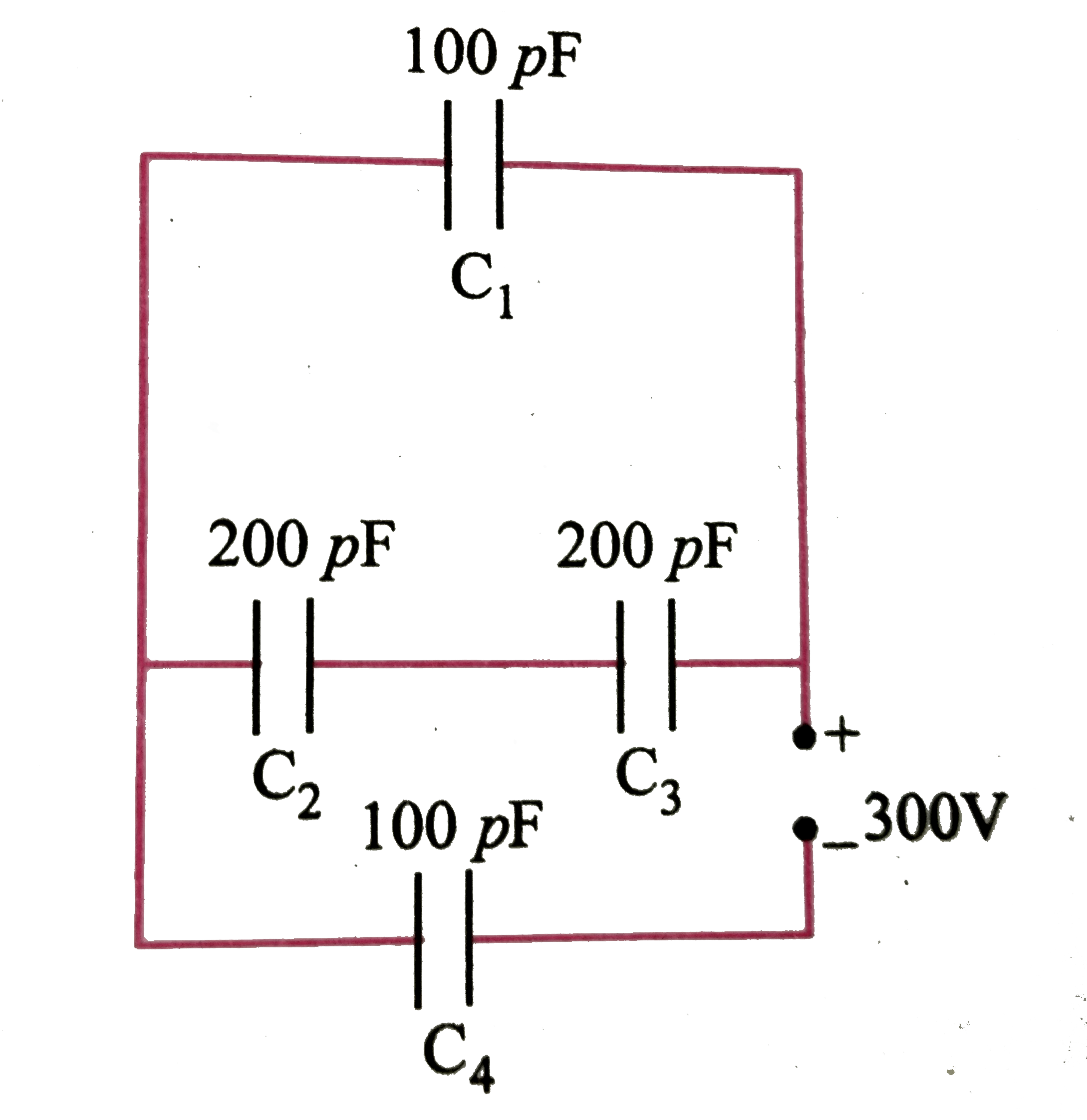 .
.
View SolutionObtain the equivalent capacitance of the network in Fig. For a 300 V supply. Determin the change and voltage across each capacitor.
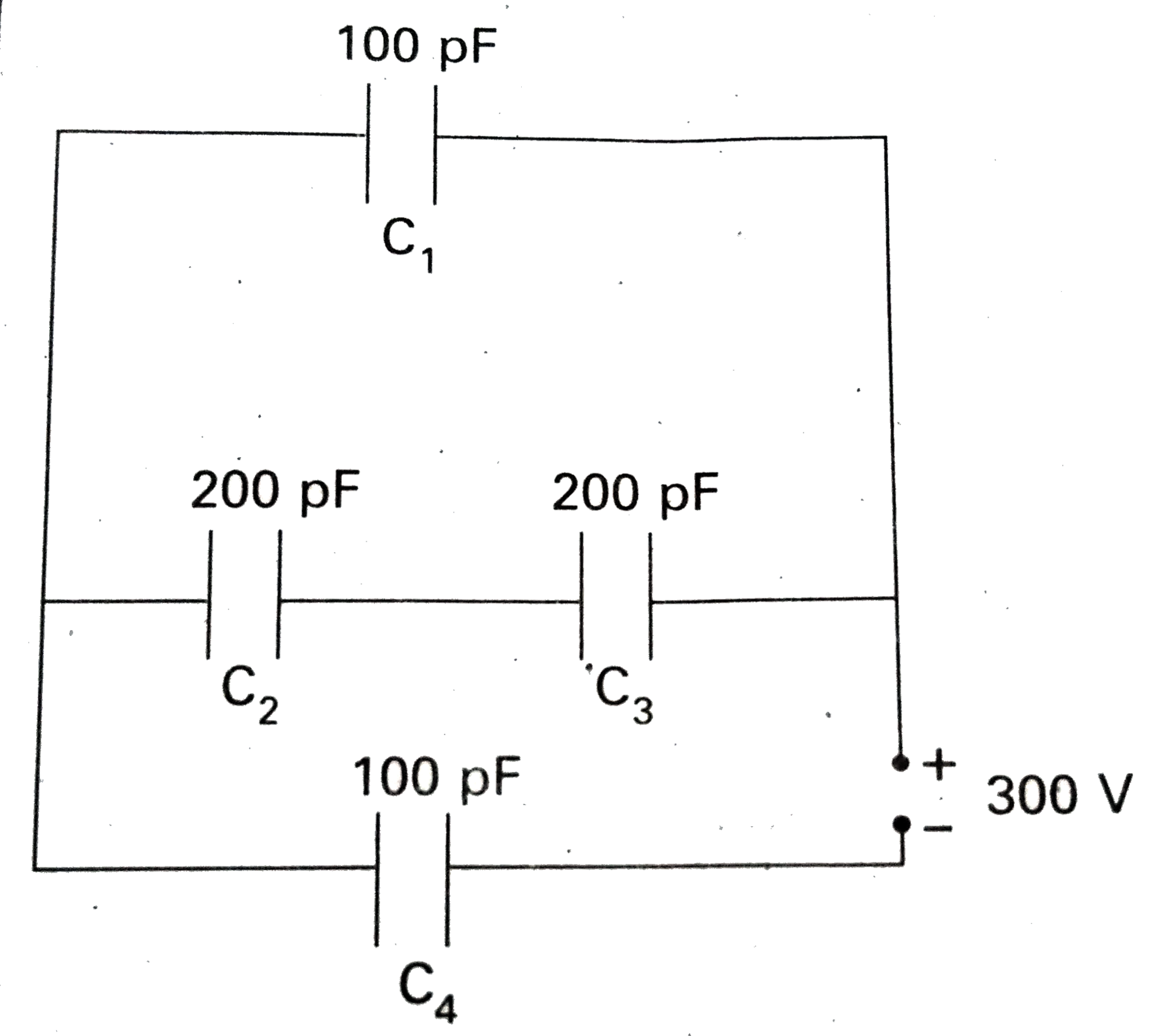
View SolutionObtain the equivalent capacitance of the netwrok in the figure given below. For a 300V supply, determine the charge and voltage across each capacitor.
View SolutionObtain the equivalent capacitance of the network in figure below. For a 300V supply determine the charge and voltage across each capacitor.
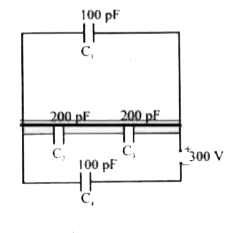
View SolutionObtain the equivalent capacitance of the network in Fig. 2.33. For a 300 V supply, determine the charge and voltage across each capacitor.
View SolutionA network of four 10μF capacitors is connected to a 500 V supply as shown in figure. Determine (a) the equivalent capacitance of the network and (b) the charge on each capacitor.
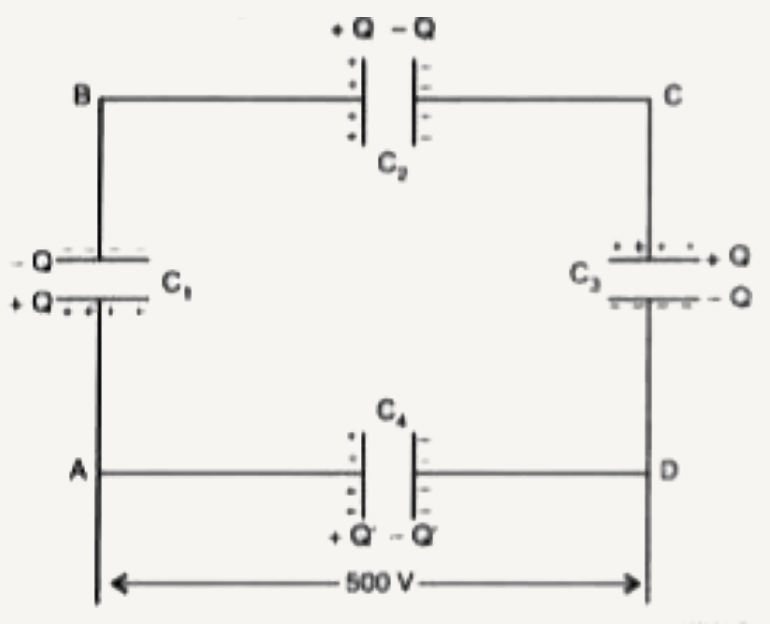
View SolutionObtain equivalent capacitance of the following network, Fig. For a 300V supply determine the charge and voltage across each capacitor.
View Solution
